Heritage Walk No.6 for Kids

Start the walk on the main avenue of trees next to the cricket pavillion. Before we start lets think about the Common.
What does “Common ” mean? It means (held all together – all the villagers could use it).
How do we use it? (cricket, dog walking, fairs, fireworks etc.)
How did villagers in the past use it? Any ideas?
- Could cut turf and use the grass
- Use the water for washing
- Could graze animals on it e.g. sheep, chickens, cows, horses
- Could keep ducks on the pond
- Could play games on it
- Catch rabbits and birds
- Collect firewood
- Have meetings on it
Then it was called the Heath. It belonged to St Albans Abbey (it was part of the Priory lands). Then the Crown, the City of London and later the Earls of Verulam who gave it to the Village Parish Council in 1947.
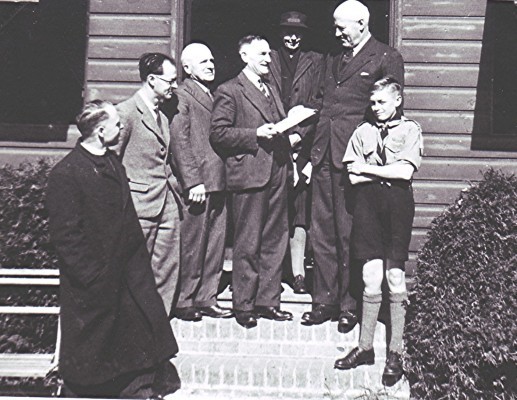
CRICKET
When was the first match played on the common? (Perhaps in 1666)
The most famous local player – “Lord Frederick Beauclerk”, known as the father of English cricket.

Look at the next photo.

Look at the men standing outside the tent. They are watching the match and waiting to go on. The tent was the cricket pavillion in the 1890’s
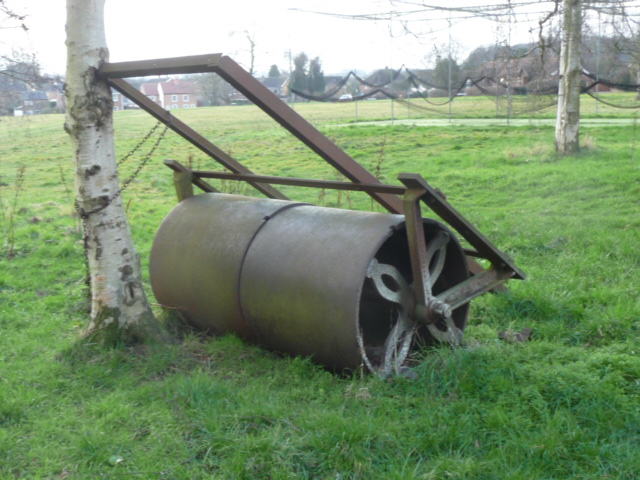
Can you find this? It was given to the cricket club in the 1920’s and was pulled by a horse. In 1932, a pavillion was built but where was it? Look at the next photo. Look at the building in the background. It gives you a clue as to where the old pavillion was situated.
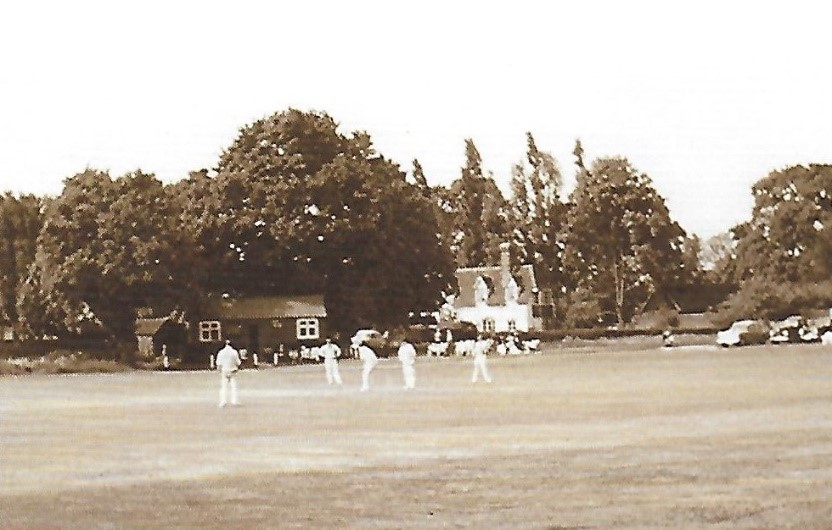
The new pavillion was built in 1966. It has moved!!

Look across the road at the Old School which has been converted to houses.


- Look carefully and you will see 2 large buidings. One was for boys and the other was for girls. The school was opened 170 years ago.
- Where do you think the playground was?
- The buildings provided space for around 430 children and 3 teachers. How many pupils are in your class? How many classes are there in your school? How many teachers are there?
The headmistress organised this celebration in 1918.
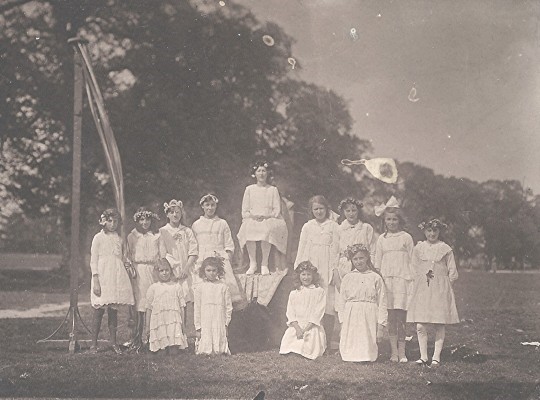
What is going on? Have you ever done this?
Start walking with the cricket pitch to your left. To your right you will see “The Cricketers” pub.

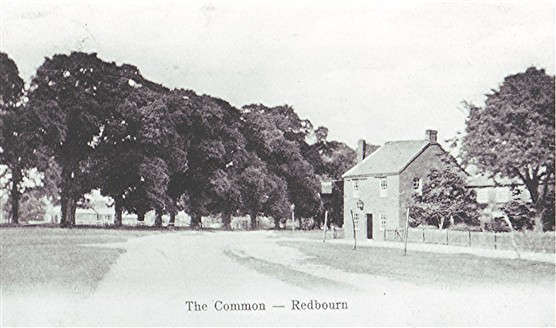
Have a look at the pub sign. Why do you think it is called “The Cricketers”. It was once called the “Three Horseshoes” because the common was once a racecourse!
THE HUNT
The Duke of Cumberland (in 1745) had a pack of hunting dogs and Hertfordshire was known as a hunting area.
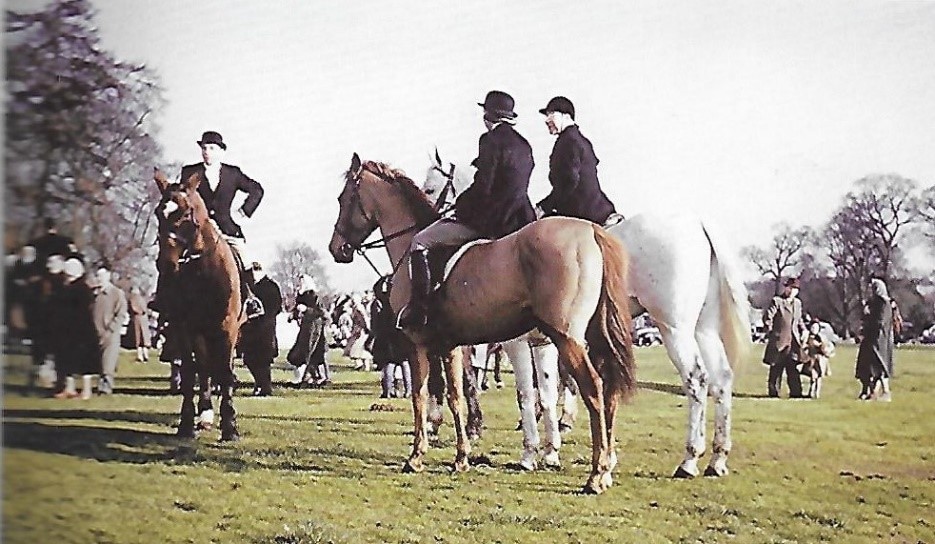
They met outside The Cricketers until the 1970’s. There was a big meet on Boxing each year. Do you know why it stopped?
The museum is next to The Cricketers.



Look at photo no.3. Can you work out what the white building on the left is? It is bottom right in photo no.4.

The museum is all that is left of a steam powered silk mill built over 150 years ago. A bell was rung to bring village workers to the factory each day. Workers were women and children over 8, working a 10 hour day. In the Second World War, Brooke Bond, a tea company, took over the factory and built new buildings that can be seen at the top of photo no.4. The factory closed in 1996 and was all knocked down apart from the manager’s house which became the museum we know today. Houses were built on the rest of the site. Do you know anyone who lives on the Brooke Bond estate?
Now cross over Lye Lane and continue your walk through the avenue of trees. Look to your right at the area between the trees and Common road where the pedestrian crossing is.
TENNIS
In the photo below you can see the line of trees and in front, tennis courts marked out in the summer where fairs stop nowadays. Do you know where the tennis courts are now?

This part of the Common has fairs and the firework display. The village was given permission by King Charles I to have 3 fairs each year. One was a horse market, another for cattle and finally a sheep market. These have now changed to pleasure fairs.
This area of the Common opposite the museum has always been used for celebrations.
CELEBRATIONS
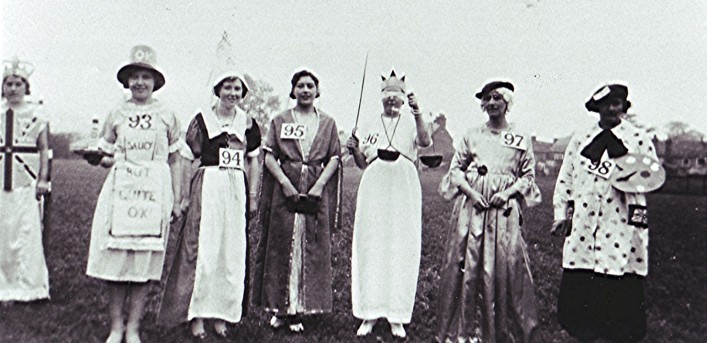
Can you work out what the people are dressed as?

The girl in this parade is important. What do you think is going on?

Dances were held and very popular with all ages.

Trees were planted.
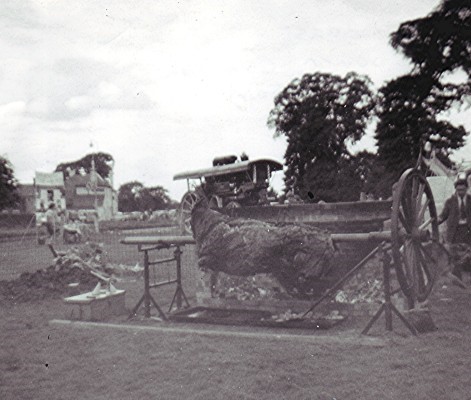
Look at the photo above.
- What buildings can you see in the background?
- What is happening here?
It was part of an Elizabethan Fayre in 1977
Keep walking and you will see the war memorial. Walk over to it on one of the grass-worn paths.


- Stand in the place where picture 3 was taken from. What buildings can you see now and are they in the old picture?
- Count the number of names on the memorial from World War I and then World War II. Do you recognise any of the names?
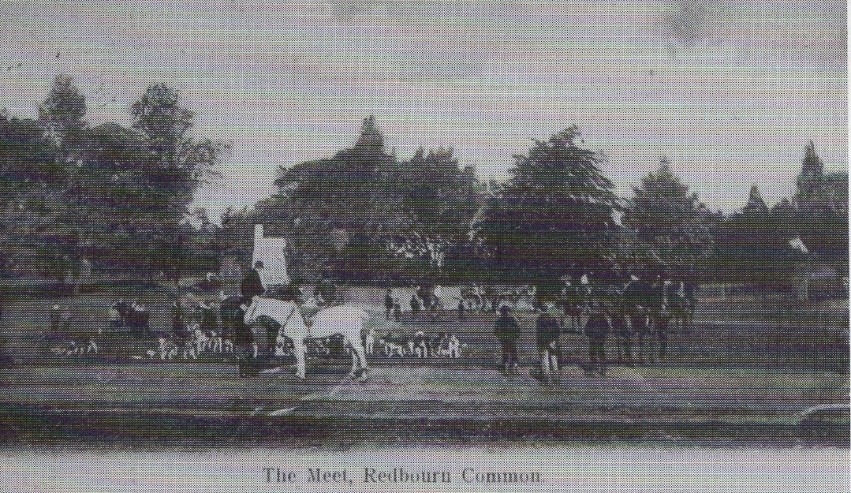
Look at the photo above. It was taken in this spot before the war memorial was built. So, before what date?
The people are standing around the pond. It is no longer there but can you see where it was? (Clue: There is a tree in the middle now). Village women used to do their washing in it!
Now walk around the edge of the common “past the pond ” to see Cumberland House.


The House was built in 1745 as a hunting lodge for the Duke of Cumberland, the son of King George II.
- How many years ago was that?
- Can you see where he would have kept his dogs and horses?
- Look for the stone pineapples – do you have any idea why they are there? (a sign of wealth)
- What takes place in Cumberland Gardens every December?
Now walk on the footpath along North Common and look out for this building on the right.

What clues can be seen that the building was once a church? It opened in 1836 but quickly became too small for the congregation so the bigger one was built.
Walk on looking to the right and you will see the present Methodist Church.
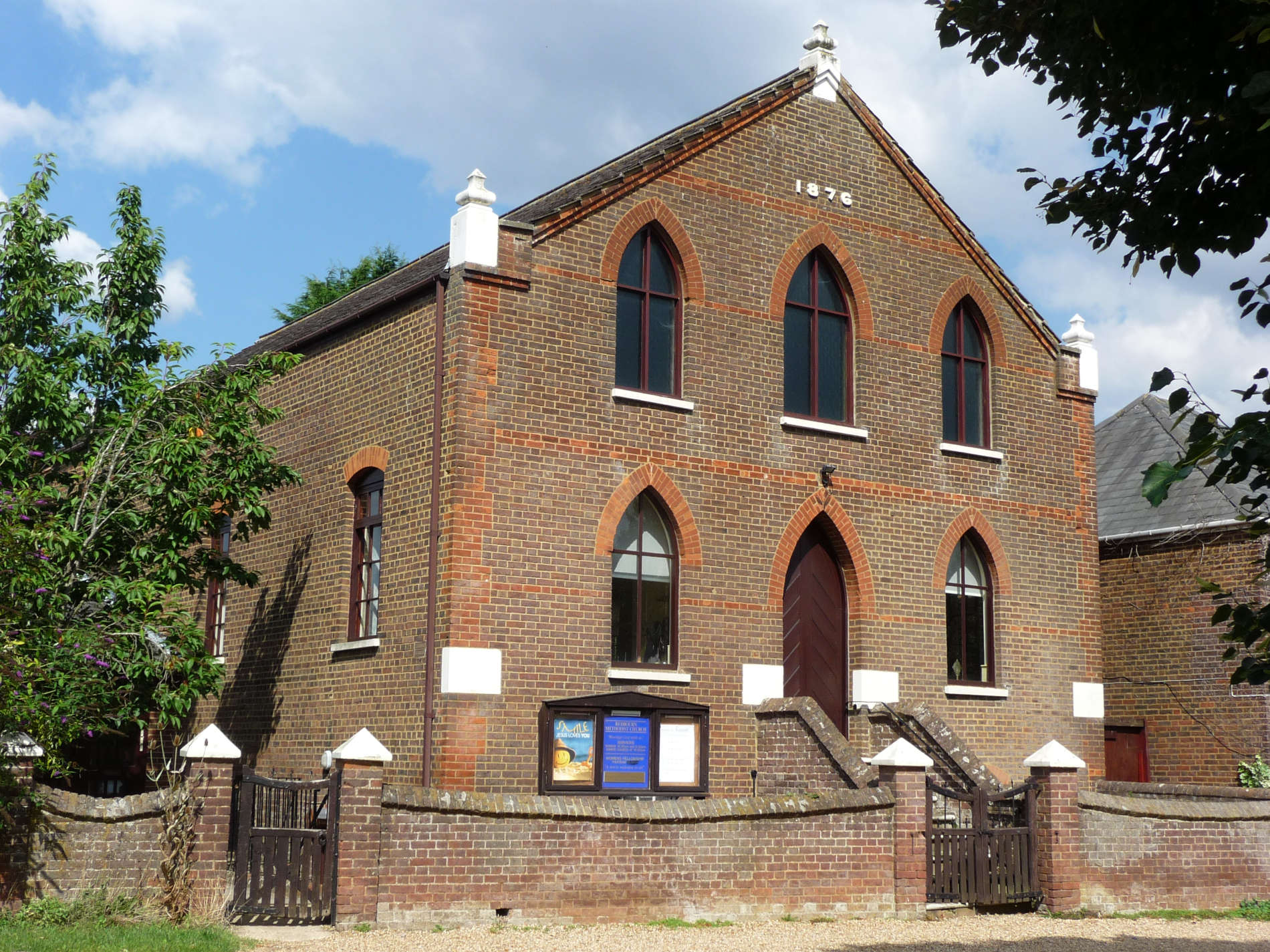
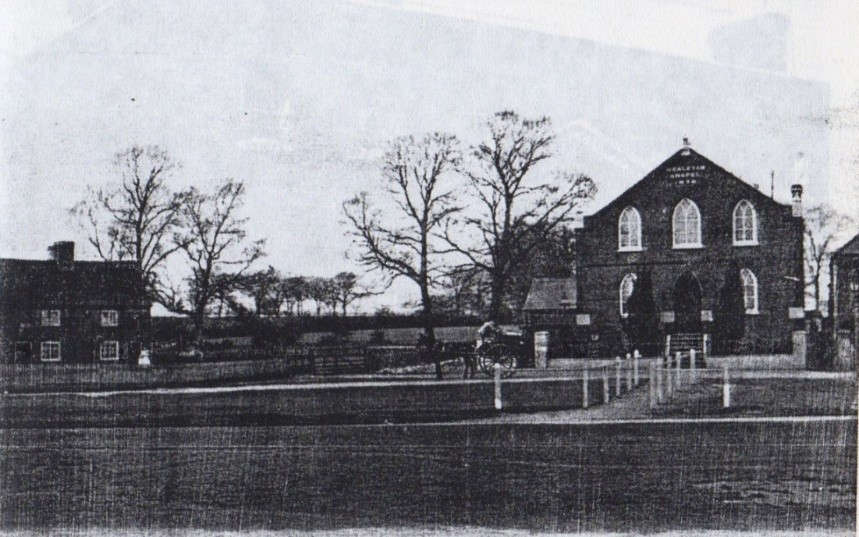
Can you spot when the church was built?
FOOTBALL
Look at this photo.
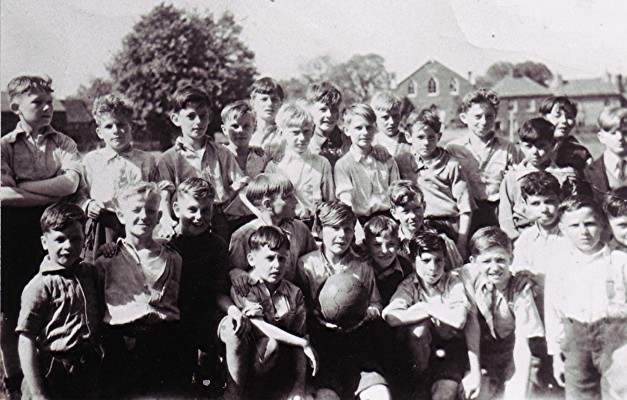
Look at the buildings behind the young footballers. Can you recognise them and work out where football was played?
There was no pitch marked out or any changing facilities. Where is football played now?

This comic football match was played in 1935 to celebrate the Silver Jubilee of the present Queen’s grandfather. Can you work out where on the Common it was played?
Before you continue your walk, can you see this bungalow to the left of the Methodist Church in Lord’s Meadow?
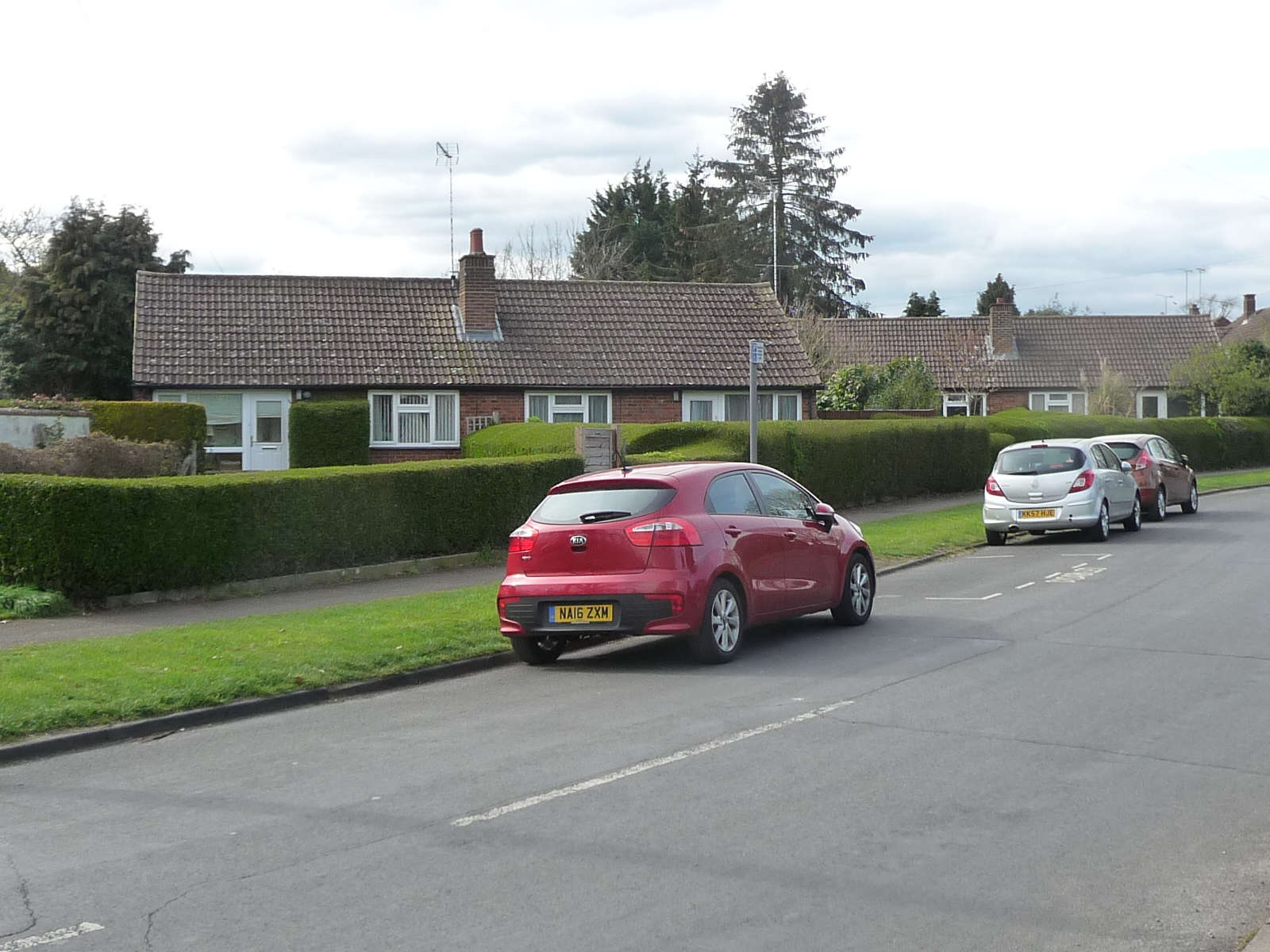

These cottages once stood where the bunglows are today in a place called Snatchup. They were pulled down in the 1950’s
CYCLING
Walk a little further up North Common and you will pass the starting line for the annual Fete de Velo. The village has a history of cycling! Look at this photo.

- Do you recognise the part of the village that this photo is taken?
- Do you wonder why the the Army Cycle Battalion visited Redbourn during World War I ? We will never know.
Now the Fete de Velo is held around the Common in June.

Walk further on until you reach the junction with Lye Lane. After you have crossed over, look back at Heath Farmhouse.


The main house (with the wooden beams showing) is about 400 years old. Can you spot the barn that belongs to the house which was used when it was an active farm?
As you walk on, you will see these cottages to your right.


- These were built nearly 400 years ago as 5 separate homes. Count the front doors. How many homes are there now?
- How many chimneys are there?
- Look at the roof!!!
- The cottages have an interesting name. Can you suggest reasons for it?
Carry on walking and you will come to Woollams on your right.


These are “Alms Houses” built in 1926. What does that mean – alms houses?
When you reach the road junction turn left to continue on the path around the Common. As you do so, look for this building. It’s across the road.


- These cottages are extremely old – about 350 years old. They used to be Mansdale Dairy Farm. What do you notice about the roof?
- In the old photo you can see a barn behind the house. This was in the farm yard. Is the barn there now? Can you see it?
You will reach the end of the avenue of trees. The Jolly Gardener(s) is opposite.
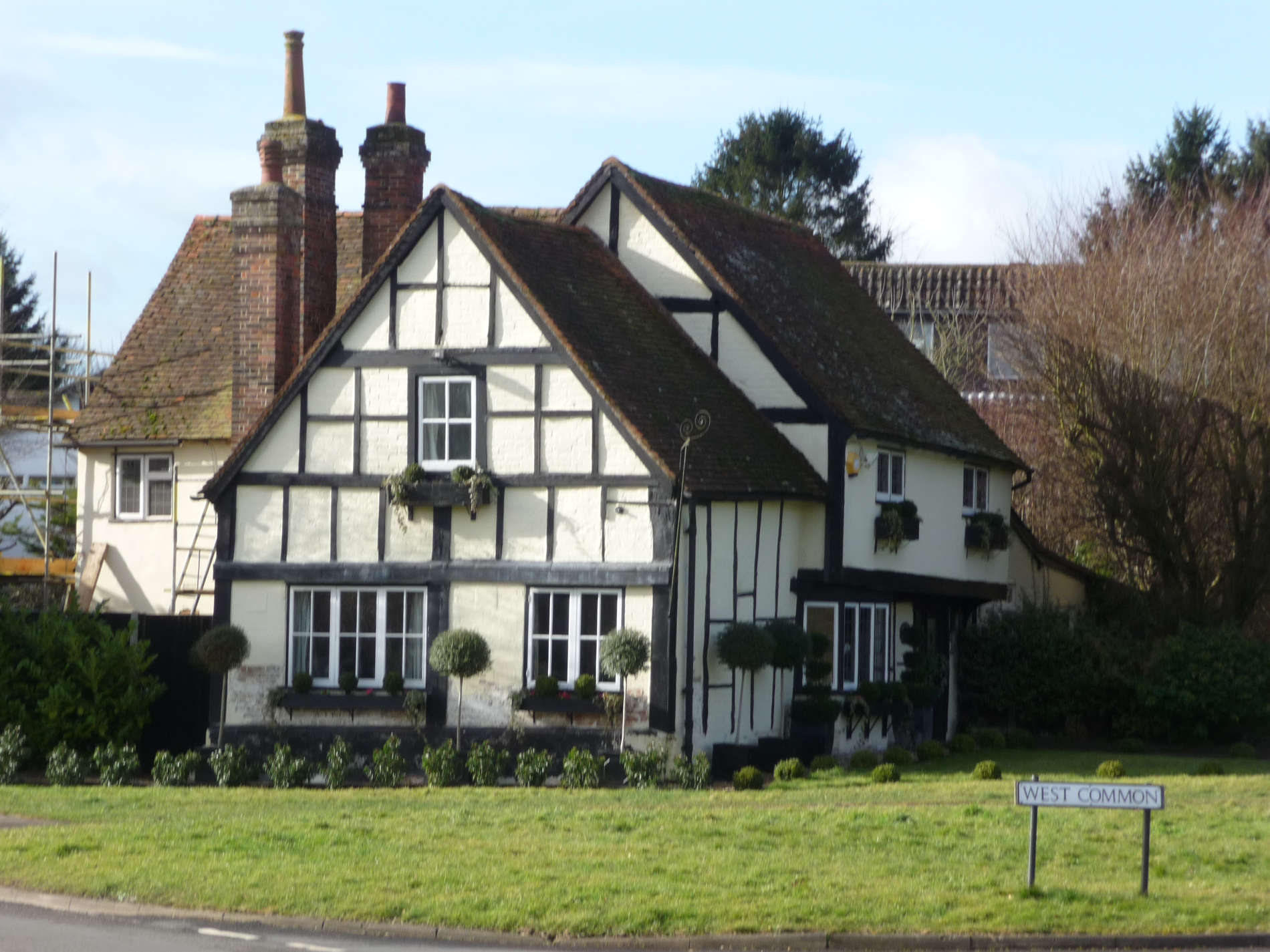
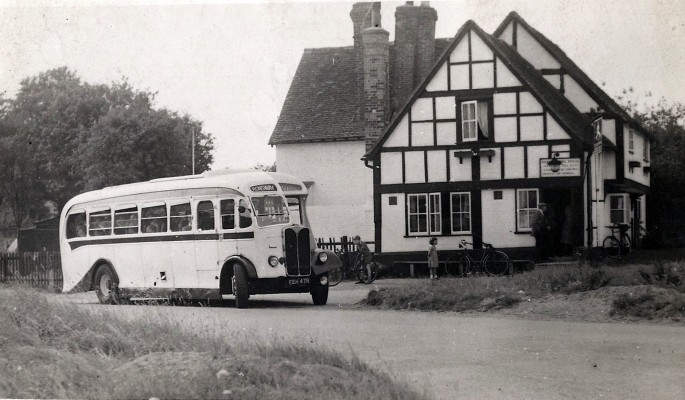
- Can you find the name of this house?
- With a name like this, can you guess what this house was at one time?
- How can we tell that the house is very old?
There was a straw plaiting school for girls in this house 150 years ago. Plaits of straw were sown together to make hats.

GOLF ON THE COMMON !
Here is a plan of the golf course
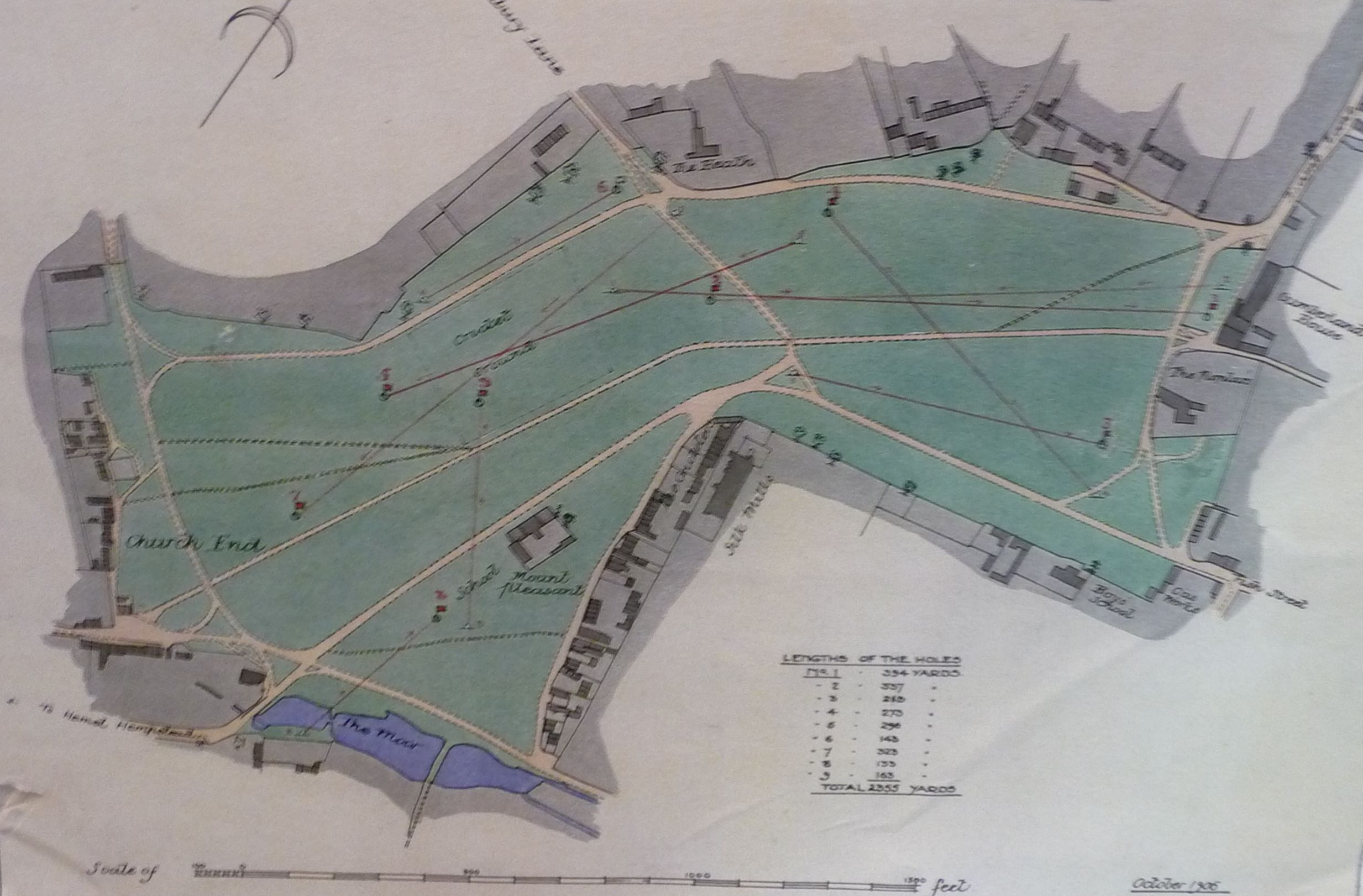
- Can you see where the fairways and the greens were?
- How many holes were there?
The course opened in 1903. The photo below shows two people playing a hole. Can you work out where they are?

As you walk back up the avenue of trees towards the cricket pavillion, consider the other activities that records show happened on the Common. ARCHERY was very important. Villagers had to keep up their archery skills in case they were called to war. In 1621, the village was fined 20 shillings (£1) for not keeping up the butts – mounds of earth used as targets.
BARE KNUCKLE BOXING also took part on the Common.
The Common has always been a busy place. Just think how many people have walked over the ground you have just walked on!